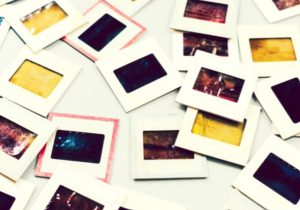Images captured on slides through the lens of an analog camera hold a unique charm, but they are also vulnerable to the passage of time. Transitioning from analog to digital preservation is not just a way to safeguard them, but a means to breathe new life into these past images. The art of converting 35mm slides film to digital is more than just a technical process; it’s about restoring and enhancing the past that might otherwise fade away.
DIFFERENT SLIDE FORMATS
There are many different slide formats, all of which Digitize Archives can digitize. Here’s a brief description to help with identifying the types of slides you may have in your possession.
- 35mm “Standard” slides, most commonly used since the 1930s. The slide mount is 2” x 2” and the slide film size is 24mm x 36mm.
- “Half frame” 35mm slides, a reduced slide size of the standard 35mm film size by half – 17.5mm x 23mm.
- 126 slides. Kodak introduced this slide in the 1960’s. While the mount size remained 2” x 2”, the film size was a perfect square as well at 28mm x 28mm.
- 127 slides. Kodak made these from the 1910s until 1995. Also a 2” x 2” square like the 35mm, but the film portion of the slide took up a much larger area – 40mm x 40mm.*
- 127 “Superslides.” Very much like the 127, these have a much thinner mount. They were mainly used in tourist-purchased slides and very rarely in personal images.*
- 120 “Medium” slides, introduced by Kodak at the start of the 20th century. This slide format has a slightly larger mount – 2.25” x 2.25” – with the film size being 55mm x 55mm. These commonly came in a cardboard holder or a metal frame.
- 110 slides, developed by Kodak in the 1970s for pocket-size cameras. While the slide mount is 2” x 2”, the film size is 13mm x 17mm.
- “Mini” 110 slides – this slide format has the same size film as a standard 110 but comes in a smaller mount at 1” x 1”.
*With the 127 standard slide and the super slide, we scan the full film area, unlike many of our competitors.
Photography has come a long way since the days of loading a roll of 35mm film into a camera. While film photography enthusiasts still appreciate the texture, depth, and authenticity of film grain, there’s no denying the advancements digital technology has brought to the art of preservation. Digitizing 35mm slides and various other formats allows us to not only preserve these images but also to enhance and restore their quality in ways that weren’t possible before.
Benefits of Digital Conversion
When you convert 35mm to digital, you’re taking a significant step toward preserving the past for the future. Digital formats offer a level of durability that physical film negatives simply can’t match. Unlike film reels or old 35mm slides that are prone to degradation over time, digital files maintain their quality indefinitely. This ensures that the vivid colors and sharp details of your images are preserved.
Choosing the Right Conversion Method for Slides
When it comes to converting 35mm slides to digital, the method you choose can make all the difference in the final result. Professional digitization services often utilize high-end film scanners or flatbed scanners specifically designed for film negatives and 35mm slides. These scanners capture the smallest details, ensuring that the digital file is a true representation of the original image.
Convert 35mm Film Slides and More to Digital at Digitize Archives
At Digitize Archives, we specialize in helping you preserve your collections through professional digital conversion services. Don’t let time fade away the moments that matter most — contact us today to learn how we can help you restore and preserve your old 35mm slides as well as slides in other formats – ensuring that these historic images remain as vivid and meaningful as the day they were captured and preserved!


